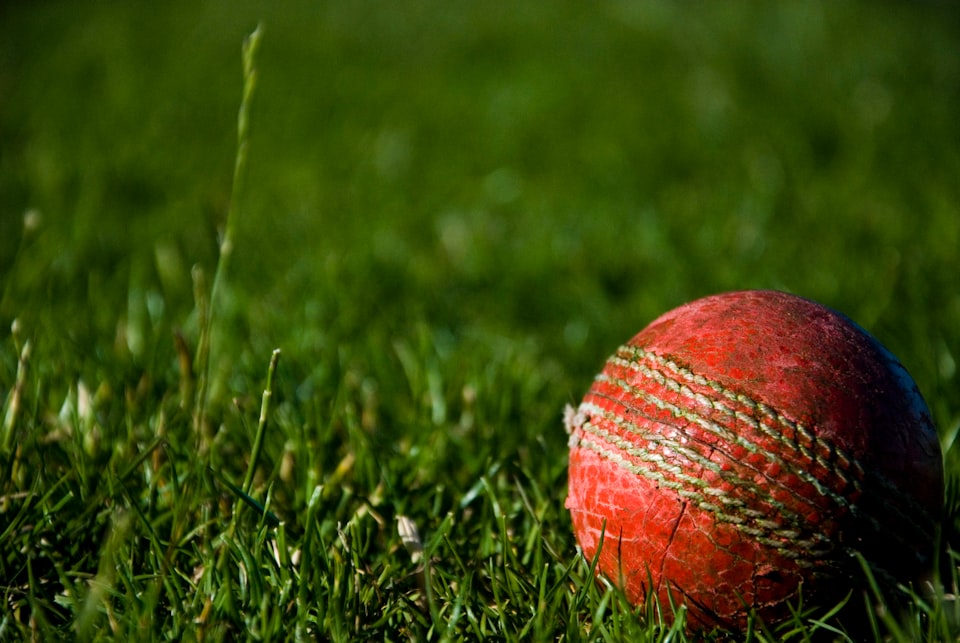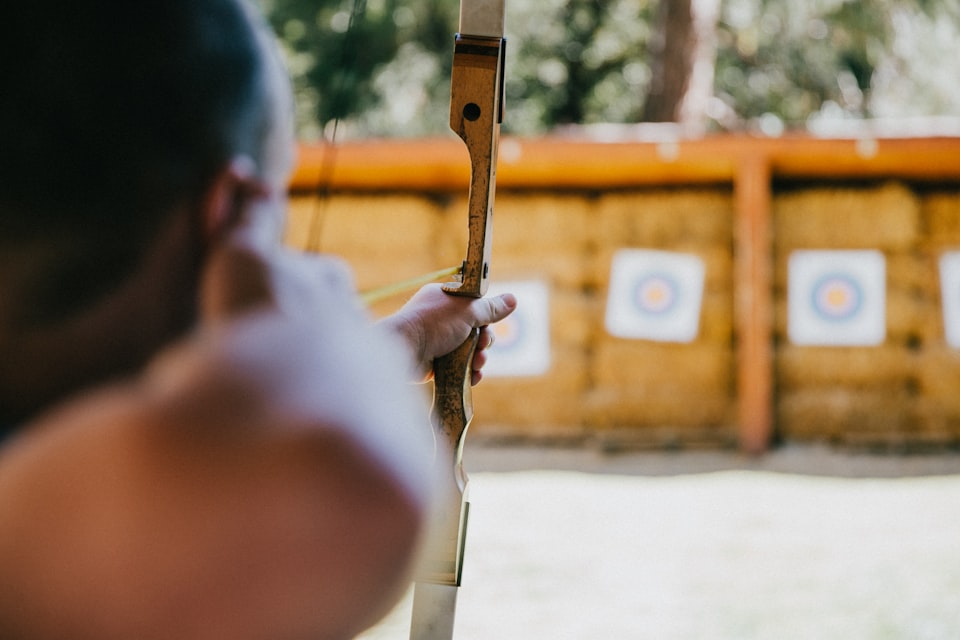Left-handed bowlers have played a pivotal role in the rich history of cricket, bringing a unique angle and skill set to the sport. Often referred to as 'southpaws,' these bowlers use their left arm to deliver the cricket ball, and they have been known for their ability to exploit different aspects of the pitch that right-handed bowlers might not be able to. Their natural angle away from a right-handed batsman and into a left-handed one has provided strategic advantages in countless matches across all game forms.
Throughout the years, cricket has witnessed some exceptional left-arm bowlers who have significantly impacted their teams. They have consistently challenged batters with their swing, seam movement, and spin. The different trajectories and points of release of left-handed bowlers can disrupt even the most adept batters' footwork and timing, often leading to crucial breakthroughs during matches.
The conversation about the best left-handed bowlers of all time is filled with iconic names who have taken hundreds of international wickets and set records that inspire upcoming cricketing talents. Their legacies are not just in the numbers but also the moments of brilliance that have turned matches and even series on their heads. These bowlers have been instrumental in defining strategies and have set the standards for excellence in left-arm bowling.
Historical context
In the annals of cricket history, left-handed bowlers have made a significant impact across all formats, from first-class cricket to World Cup tournaments. While lefties represent only about 10% of the world's population, their presence in cricket, mainly as bowlers, has been notably disproportionate to their demographic presence.
The left-arm bowler brings a unique aspect to the game with the natural angle and the ability to get the ball to swing away from a right-handed batsman. This variety has influenced the tactics teams employ since cricket's early days. The prevalence of left-handed bowlers in cricket has evolved, with success in the international arena leading to increased representation at all levels of the sport.
- First-Class Cricket: Boasts a storied tradition of left-handed bowlers who have exploited conditions and the wear of the pitch to their advantage.
- World Cup: The global stage where left-arm bowlers have often shone, helping their teams to victories with pivotal performances.
Within this context, the left-handed bowler has garnished a reputation, with the skills deployed by these bowlers being a consistent thread through cricket's development. From the early 1900s to the modern era, left-arm bowlers have maintained their place as linchpins in many successful cricket sides—whether by stifling runs or taking wickets at critical junctures of the game.
Defining greatness in left-handed bowling
Greatness in left-handed bowling is often quantified by record milestones, hall of fame inductions, and the players' impact on cricket matches.
Record milestones
Cricket historians and aficionados frequently cite record milestones as indicators of a bowler's greatness. A left-handed bowler who has amassed many wickets in test matches solidifies their reputation. For instance, being the leading wicket-taker among left-handed bowlers is a clear-cut metric of dominance and skill.
- Test Match Wickets:
- Record-holders are often those who surpass 300 wickets.
- Achieving this in the fewest matches played adds prestige.
Hall of Fame inductions
Hall of Fame inductions are prestigious recognitions of a cricketer’s enduring influence on the game. These bowlers have not only tallied notable statistics but have also demonstrated sportsmanship and dedication to cricket.
- Criteria for induction:
- Exceptional performance statistics
- Contribution to the sport's history
Impact on cricket matches
A bowler's impact on cricket matches is pivotal in assessing greatness. Left-arm bowlers who consistently influence the outcome of games, especially in high-pressure situations, are held in high esteem. Performance in test matches often serves as the ultimate testing ground.
- Match impact:
- Involves key wickets at critical moments
- Ability to alter the course of a game through skillful bowling
Evaluating a left-handed bowler's greatness involves a holistic look at these facets, acknowledging their tangible achievements and lasting legacy in cricket.
Key techniques and styles
The pinnacle of left-handed bowling is marked by an array of specialized skills that cater to different types of deliveries and match situations. Mastery in fast bowling, spin wizardry, unwavering control, and the ability to execute reverse swing and yorkers are hallmarks of the finest in the craft.
Fast bowling mastery
A left-handed fast bowler's inventory often includes late swing and extra bounce, which can confound even the most accomplished batters. Seam position is crucial, with bowlers striving for a perfect upright seam that can lead to prodigious movement off the pitch. Their ability to consistently deliver in-swinging yorkers at a high pace is a testament to their skill.
Spin bowling craft
In spin bowling, left-handers excel with flight and spin manipulation. Control of these aspects allows them to deceive batters in the air and off the pitch. Whether through the traditional finger spin or the more complex art of wrist spin, imparting lateral movement is their signature style.
Control and precision
Control and precision are cornerstones for a successful left-handed bowler, regardless of pace. Achieving accuracy to hit the correct lengths consistently is a skill honed through years of practice. It enables them to restrict scoring options and apply pressure, resulting in wickets and economical bowling figures.
Reverse swing and yorker
Executing reverse swing requires a nuanced understanding of ball maintenance and aerodynamics. Bowlers often target the softer side of the ball to produce this late movement in the air. Coupled with a well-placed yorker, particularly an in-swinging yorker, they can target the batsman's toes, making it difficult to dig out. This combination can be lethal in the closing stages of an innings.
Legendary left-handed bowlers
Throughout the history of cricket, left-handed bowlers have made significant impacts with their unique angles and styles. This section focuses on the most iconic left-arm bowlers, highlighting fast bowlers, spinners, and those who have excelled in batting and bowling as all-around talents.
Fast bowlers
- Mitchell Johnson was a fearsome Australian pacer known for his speed and bounce. After clinching 313 Test wickets, Johnson was instrumental in Ashes victories and many Australian triumphs.
- Wasim Akram of Pakistan, renowned for his deadly swing, claimed over 500 ODI wickets. A true master of both reverse and conventional swing, Akram's name is etched in cricketing lore.
- Chaminda Vaas, the Sri Lankan left-arm fast bowler, was known for his ability to swing the ball both ways. With over 400 Test wickets, Vaas remains one of the most successful left-arm pacers.
- Alan Davidson stood out in the 1950s and 60s as a top-class left-arm fast-medium bowler and a competent batsman.
- Mitchell Starc, another Australian pace spearhead, is known for his lethal yorkers and consistent wicket-taking ability, making him one of modern cricket's standout fast bowlers.
Spin bowlers
- Hedley Verity, the English slow left-arm orthodox bowler, had remarkable control and precision, making him one of the finest spinners of his era.
- Derek Underwood was often labeled "Deadly Derek" for his ability to bowl left-arm spin at medium pace, claiming 297 Test wickets for England.
- Daniel Vettori from New Zealand was a left-arm spinner known for accuracy and flight. He's one of the few to achieve the double of 300 Test wickets and 3,000 runs.
- Rangana Herath is another spinner who has proven his worth in the international arena. His ability to decimate batting lineups has made him a significant figure for Sri Lanka, achieving over 400 Test wickets.
- Bishan Singh Bedi was an Indian spinner with a classic action and formidable guile. He mesmerized batters worldwide and was part of India's famous spin quartet.
All-round talents
- Sir Richard Hadlee represents one of cricket's greatest all-rounders. While primarily a right-handed bowler, his contribution with the bat was also substantial, making him an integral member of the New Zealand team.
- Garfield Sobers is often regarded as the most excellent all-rounder in cricket history. His ability to bowl both left-arm fast-medium and spin and his exceptional batting skills set him apart.
- Sir Richard Hadlee's left-handed batting and his right-handed fast-medium bowling provided New Zealand with numerous match-winning performances. His accomplishments as a bowler and a batsman have set a high bar for all-rounders.
Each player has left an indelible mark on cricket with their left-handed bowling skills, forever changing the game's dynamics and inspiring future generations of cricketers.
Iconic matches and performances
Iconic left-handed bowlers have etched their names in cricket history through remarkable performances in World Cup tournaments and Test Match cricket. Their impact on these formats has been significant, often turning the tide of a match with their skill.
World cup triumphs
- Wasim Akram (Pakistan): 1992 World Cup Final
In a dramatic display of precision and skill, Wasim Akram delivered a match-winning performance during the 1992 World Cup Final against England. Akram's crucial last overs included the vital wickets of Ian Botham and Allan Lamb, which were pivotal in securing Pakistan's first World Cup. His left-arm fast bowling secured his legacy with three wickets for 49 runs in 10 overs. - Mitchell Starc (Australia): 2015 World Cup
Mitchell Starc's lethal bowling in the 2015 World Cup culminated in Australia winning the trophy. Starc's 22 wickets at an average of 10.18, especially his 6/28 against New Zealand in the group stage, exemplified dominance. He was a consistent threat throughout the tournament, leading him to be named Player of the Tournament.
Test match dominance
- Sir Gary Sobers (West Indies): Various Matches
As one of cricket's greatest all-rounders, Sir Garfield Sobers' left-arm bowling was a critical weapon for the West Indies across multiple test series. His versatile approach included seam and spin, enabling him to take 235 test wickets, often quickly dismantling opposition batting line-ups. - Zaheer Khan (India): India vs England, Trent Bridge 2007
Zaheer Khan dominated the 2007 Trent Bridge Test against England by displaying impeccable swing and seam control, taking nine wickets across both innings. His performance was significant in India clinching a rare Test win on English soil. - Rangana Herath (Sri Lanka): Sri Lanka vs Pakistan, Colombo 2014
Rangana Herath's left-arm spin was central to Sri Lanka's test victory against Pakistan at Colombo in 2014. Herath's nine wickets for 127 runs in the second innings remain one of the best bowling performances by a left-handed bowler in Test cricket, underlining his impact in the game's longer format.
Evolution of the sport
Cricket has experienced significant transformations with continuous advancements in bowling techniques and regulations. These developments have profoundly influenced left-handed bowlers' approach and performance.
Bowling innovations
Left-handed bowlers have been at the forefront of bowling innovation. In the early days of cricket, bowlers used an underarm style, but over time, they adopted an overarm technique, significantly impacting the game's competitiveness. Swing bowling became especially advantageous on uncovered wickets, which were prevalent before grounds started being covered. This technique allowed bowlers to move the ball laterally in the air, often confusing batters and leading to their dismissal. The introduction of the new ball, used at the start of an innings and after a certain number of overs, helped left-handed bowlers exploit its condition to gain an edge over batters. Additionally, the advent of reverse swing, a skill where the ball moves in the opposite direction to normal swing, became another weapon in the arsenal of skilled bowlers, particularly impactful in Test cricket with older balls.
Regulations and equipment changes
Regulatory changes and equipment advancements have played a pivotal role in the development of cricket. Protective gear like helmets and pads have evolved, making it safer for players to face fast bowlers. Regarding ball regulations, transitioning from a red to a white ball in limited-overs cricket necessitated changes in bowling techniques, as the white ball behaves differently and is more visible under artificial lighting. Changes in the ball's seam and dimensions have also influenced how bowlers approach their craft.
Regarding pitches, the shift from uncovered wickets to covered pitches altered the game's dynamics significantly. Bowlers had to adapt their strategies as the behavior of the pitch became more predictable, reducing the natural variation that assisted bowlers on uncovered surfaces. Simultaneously, these changes have improved the overall pace and excitement of the game, with bowlers continually developing new strategies to outwit batters.
Regional profiles
The cricketing world has seen numerous left-handed bowlers who have excelled in various regional contexts, each with their challenges and achievements. Their success on the field has often reflected the conditions and cricketing cultures from which they hail.
Subcontinental success
The subcontinental pitches, often characterized by slow turns and low bounce, have been the breeding grounds for some of the finest left-handed bowlers. India and Pakistan have produced exceptional talents like Zaheer Khan and Wasim Akram, who mastered the art of reverse swing in such conditions. Sri Lanka contributed with the likes of Chaminda Vaas, whose subtle variations and seam movement troubled many batters.
- India: Zaheer Khan
- Pakistan: Wasim Akram
- Sri Lanka: Chaminda Vaas
Aussies and kiwis
Australia and New Zealand have a strong tradition of producing formidable left-arm pacers capable of exploiting their lively home pitches and various conditions abroad. Australian legends like Mitchell Johnson and Mitchell Starc have dominated with their pace and fire, while Trent Boult's swing from New Zealand has been instrumental in his team's successes.
- Australian left-handers:
- Mitchell Johnson
- Mitchell Starc
- New Zealand left-hander:
- Trent Boult
English and west indian contributions
From the English counties to the sunny Caribbean, left-handed bowlers have left an indelible mark on the game. England's Derek Underwood was renowned for his precision and ability to exploit damp conditions. In contrast, the West Indies have seen the likes of Gary Sobers, not just a versatile all-rounder but also an astute left-handed bowler with the ability to swing the ball.
- English left-hander:
- Derek Underwood
- West Indian Left-Hander:
- Gary Sobers
Challenges and triumphs
Left-handed bowlers have demonstrated exceptional skill and resilience throughout the history of cricket. Facing unique challenges, their success stories are marked by their ability to overcome adversity, adapt to varying playing conditions, and exhibit mental fortitude.
Injuries and overcoming adversity
Professional left-handed bowlers frequently encounter injuries due to the demanding nature of the sport. For instance, Wasim Akram dealt with groin and shoulder issues throughout his career but remained relentless in his pursuit of excellence. He consistently honed his craft and secured his place among the sport's elite, crediting his impeccable work ethic for his success.
Versatility in playing conditions
Performing regardless of the pitch conditions is a hallmark of an accomplished bowler. Chaminda Vaas from Sri Lanka distinguished himself with his versatility, mastering the art of swing bowling in humid conditions and seam bowling on more complex surfaces. His repertoire of skills enabled him to earn the respect of his peers consistently.
Psychological resilience
Aggression and psychological resilience are vital for a bowler's success in international cricket. Mitchell Johnson, known for his intimidating speed and bounce, often leveraged his aggressive playing style to disrupt the composure of batters. His mettle, especially after returning from a toe injury in 2011, reflected his unyielding determination and contributed significantly to his triumphs on the field.
The future of left-handed bowling
The landscape of sports, particularly in cricket and bowling, is witnessing the rise of left-handed bowlers who combine aggression with versatility. These bowlers are redefining the art of bowling with their unique angle of attack, presenting a challenge to right-handed batters. The evolution in cricket emphasizes the need for a spearhead who can innovate and adapt quickly.
Innovation in technique and training is crucial for the next generation of male and female left-arm bowlers. Coaches are focusing on developing skills that can turn these bowlers into the foremost attack leaders in their teams. This includes mastering various pitch conditions and understanding the psychology of batters to exploit weaknesses.
Aggression on the field has become a valuable trait for left-handed bowlers, pushing them to excel in major championships. This aggressive approach is crucial for those aspiring to earn titles such as the PBA Player of the Year, following in the footsteps of legends like Earl Anthony and Mike Aulby.
| Aspect | Importance in Future Bowlers |
|---|---|
| Versatility | High |
| Aggression | Medium |
| Innovation | High |
| Major Championship Titles | Medium-High |
A combination of mental and physical prowess will delineate successful left-arm bowlers from their contemporaries. The inclusion of advanced analytics and biomechanics is set to play a significant role in enhancing performance levels previously seen in the sport.
In conclusion, the future holds a promising outlook for left-handed bowlers ready to embrace these advancements, ensuring their place as pivotal members of sports teams around the globe.
Beyond the pitch
The significance of left-handed bowlers extends beyond their on-field contributions, influencing cricket’s cultural landscape, earning them places in esteemed halls of fame, and paving the way for cricket as a legitimate professional career.
Cultural impact
Left-handed bowlers have often altered the game's very fabric, creating a substantial cultural impact within the sport. They break the monotony of right-hand dominance and introduce a unique dynamic to the game that captivates audiences. The distinct angle and spin they provide have challenged batters and inspired a generation of aspiring cricketers to embrace a left-handed approach.
Bowlers in the hall of fame
The ICC Cricket Hall of Fame recognizes the game's legends, and some of the most distinguished left-handed bowlers are within its ranks.
- Wasim Akram: A Pakistani cricketer known for his remarkable swing bowling, secured his spot in the ICC Cricket Hall of Fame for his undeniable influence on the sport.
- Alan Davidson: The first bowler to take 100 Test wickets with his left hand, Davidson is another prominent figure whose legacy is enshrined in the Hall of Fame.
These players have not only excelled in their careers but have also set standards for excellence and sportsmanship.
Cricket as a career
Cricket has evolved into a viable career option, with professional left-handed bowlers demonstrating that one can earn accolades and a significant livelihood through the sport. They exemplify cricket's potential as a profession, with international leagues and endorsements supplementing their income, highlighting the lucrative aspect of excelling in this sport.





